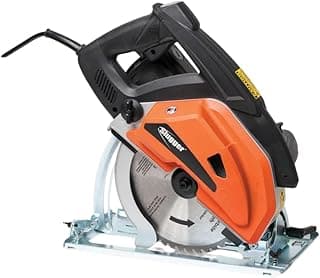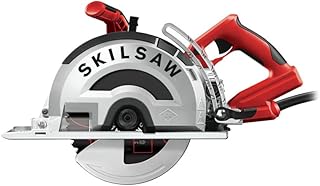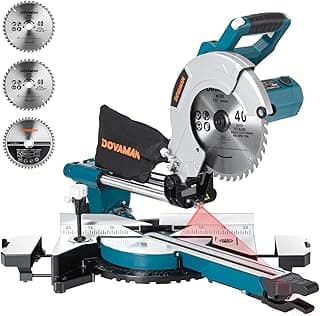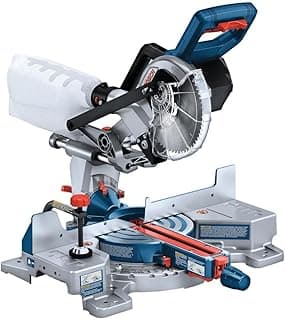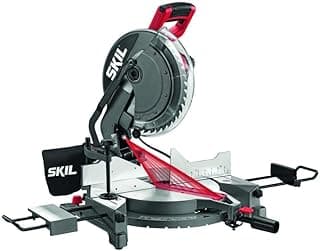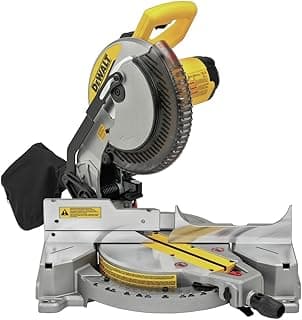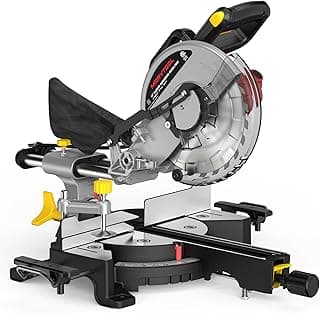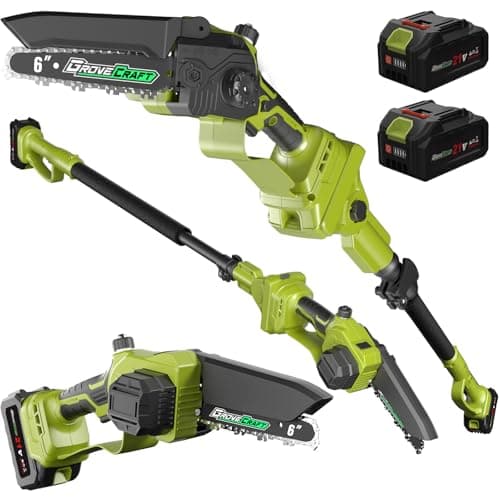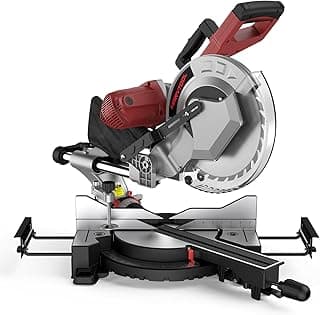When it comes to cutting metal, having the right tool makes all the difference. A high-quality best circular saw for metal ensures precision, speed, and safety. But not all circular saws are created equal. If you’ve been searching for the best circular saw for plywood for your woodworking projects, or the best circular saw for home diy tasks, you already know how crucial blade selection and power are. In this review, we’ll dive deep into the features, performance, and considerations that set the best circular saw apart, helping you make an informed decision before your next project.
Top Picks
Best Cordless: Milwaukee 2982-21 M18 FUEL Lithium-Ion Metal Cutting 8 in
The Milwaukee 2982-21 stands out as a robust cordless metal-cutting circular saw tailored for professional and DIY users who demand mobility without sacrificing power. Equipped with an 8-inch metal blade with 42 teeth and powered by an 18-volt M18 REDLITHIUM battery, it delivers consistent cutting performance on various metal surfaces. The brushless motor enhances efficiency and reduces maintenance, while the compact dimensions and ergonomic handle provide a secure grip and improved control during operation. Its 270-watt output ensures that cutting through tougher materials is more manageable, although the saw’s 12.1-pound weight may make extended use more tiring, and the blade’s 8-inch size limits the depth of cut compared to larger saws.
Customers generally appreciate the cordless design for on-site flexibility, the long-lasting battery life, and the reliability of the brushless motor, highlighting it as a convenient and durable solution for metalworking tasks. Users note that while it excels in portability and precision, those with heavier-duty requirements may need additional support or larger models for continuous, large-scale cutting projects.
Best Power: DEWALT 20V MAX XR 7-1/4 in. Metal Cutting Circular Saw
The DEWALT 20V Max metal cutting circular saw is designed to meet the needs of professionals handling demanding metal applications. Equipped with a carbide blade and a powerful 20V Max brushless motor delivering up to 1,400 watts, it can efficiently cut through up to 214 20-gauge steel studs or 105 feet of corrugated decking, making it ideal for high-volume metalwork. Its 2-5/8-inch depth of cut accommodates a variety of tasks, while the integrated chip collector helps maintain a cleaner workspace. The electronic brake enhances safety by stopping the blade in under a second after release, and the Tool Connect+ technology provides real-time data on tool location, usage, and maintenance for better jobsite management.
From a user perspective, buyers appreciate the saw’s power, precision, and connectivity, noting that it handles extended projects with less fatigue than corded alternatives. However, battery runtime can be a limiting factor for continuous heavy-duty work, and the depth of cut may fall short for larger metal sections, which could require multiple passes or additional tools.
Best Precision: Bosch GKM18V-20N-RT 18V Lithium-Ion 5-3/8 in. Cordless Metal-Cutting Circular Saw
The BOSCH metal-cutting circular saw is engineered for precise and efficient work on conduit, steel studs, and other metal surfaces. Its high-speed motor delivers up to 4,250 rpm, enabling smooth, controlled cuts, while the 5-3/8-inch metal-cutting blade provides a 2-inch cutting capacity suitable for most light to medium metal applications. The adjustable stainless steel footplate ensures durability, accurate cutting depth, and reliable cut-line guidance, complemented by an integrated chip collector that keeps the work area clean by capturing metal shavings. Additional features like the impact-resistant clear window, LED light for low-light visibility, and a convenient saw hook for quick storage enhance usability.
Customers highlight the saw’s precision, build quality, and practical features for on-site efficiency, though some note that the limited cutting depth may require multiple passes for thicker materials, and battery life can restrict continuous use on larger jobs. Overall, it is a reliable, portable option for metalworkers who prioritize accuracy and clean operation.
FAQs
What circular saw blade to use for metal?
For cutting metal, you should use a blade specifically designed for metal. Typically, this means a bi-metal blade, which combines high-speed steel teeth with a flexible alloy body. These blades are durable and resistant to heat, allowing clean cuts through steel, aluminum, and other metals. Another option is a carbide-tipped metal cutting blade, which offers exceptional longevity and precision for thicker or harder metals. Always match the blade’s RPM rating with your saw to avoid overheating and premature wear.
Can I use a regular circular saw to cut metal?
Technically, a regular wood-cutting circular saw can cut metal if fitted with the proper metal blade. However, there are several important precautions. First, standard saws may not have the power or speed control for metal, which increases the risk of kickback or blade damage. Second, cutting metal generates more heat and sparks than wood, so a saw with sufficient cooling, proper guards, and safety equipment is essential. Finally, using a saw not rated for metal may void warranties or cause long-term damage. For consistent, safe results, a saw designed or optimized for metal is always recommended.
How thick of metal can a circular saw cut?
The thickness of metal a circular saw can cut depends on both the blade type and the saw’s power. Most standard circular saws with metal blades can cut metal sheets up to 1/4 inch (6 mm) thick. Heavier-duty metal cutting saws can handle up to 3/8 inch (10 mm) steel or even thicker aluminum with the right blade. For very thick or hardened metals, it’s better to use a cut-off saw or cold saw, as circular saws may struggle and generate excessive heat. Always check the saw’s maximum cutting depth and blade specifications.
How many tooth blade for cutting metal?
The number of teeth on a metal cutting blade is crucial for smoothness and efficiency. For thin sheet metal, a blade with 60–100 teeth provides a clean, precise cut. For thicker metals, a 24–40 tooth blade is better because it removes material faster and prevents overheating. Fine-tooth blades produce smoother edges but cut slower, while coarser teeth work faster but may require finishing. Choose based on your material type, thickness, and the desired finish.
Final Thoughts
Choosing the best circular saw for metal involves more than just picking a powerful tool. Blade selection, saw power, and cutting technique all play a crucial role in safety and precision. By understanding which blades to use, the thickness limits, and the tooth count for your specific metal, you can tackle metal cutting tasks with confidence. Whether you are upgrading your workshop or handling home DIY projects, investing in the right saw ensures durability, efficiency, and professional results every time.










